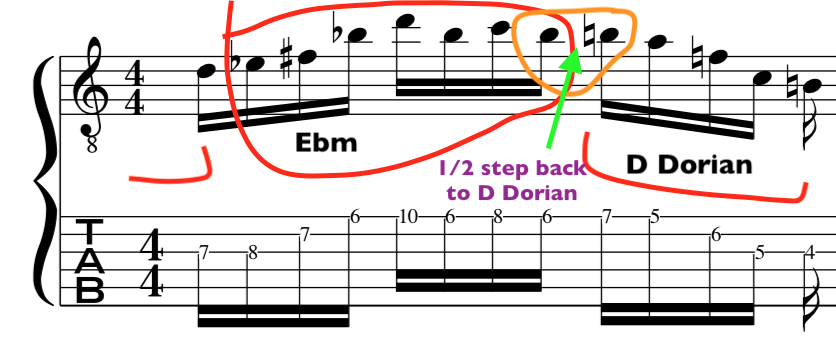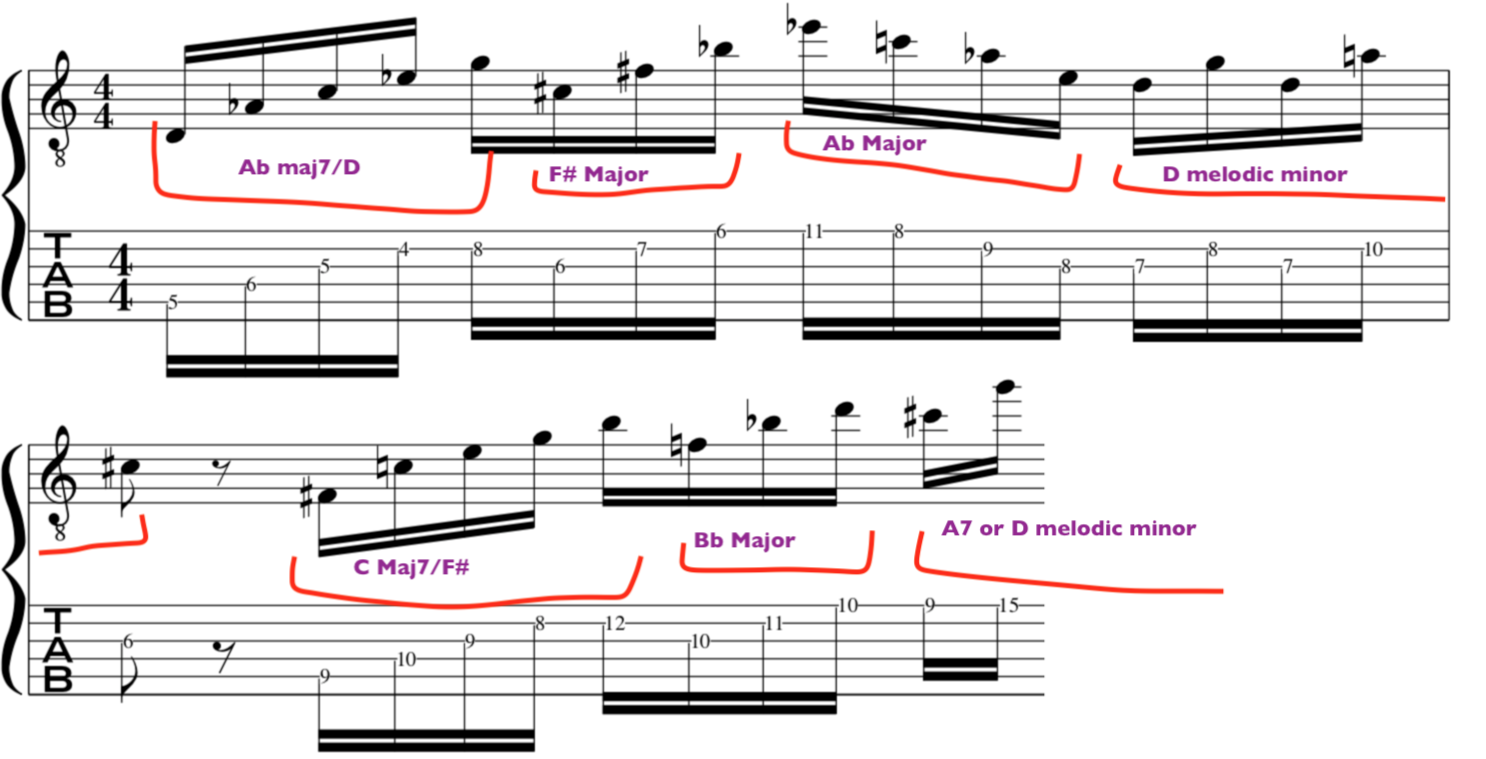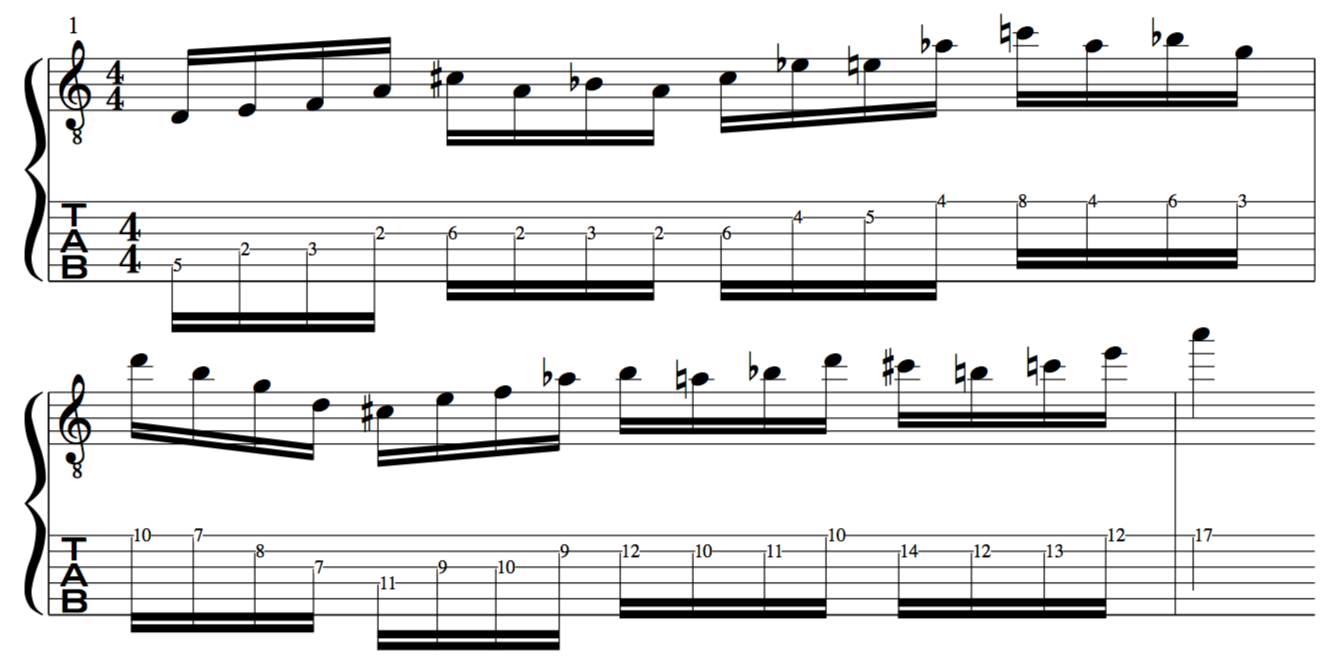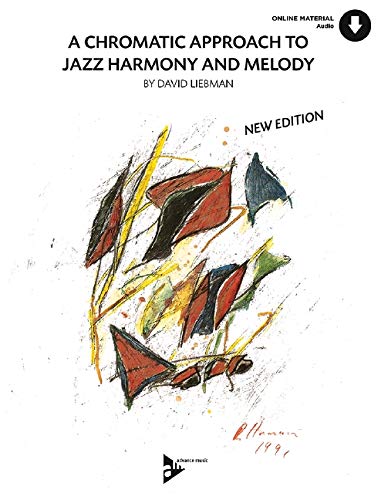DETAILED ANALYSIS IN THE VIDEO BELOW:
In this blog we will look at improvising over one chord. This will be D minor [D Dorian].

The key is to use chromaticism, tertian harmony, superimposition and outside harmonic content in order to create interesting improvised lines and move away from the cliches of scales and modes to create originality.
For example:

The key for smoothness is to be aware of where the 1/2 steps [Semitones]are in the “Connections”.
If we look below we can see where the 1/2 steps connect and how to play off of the tonic note with this. In this case we play off of the tonic D note resolving straight into the Eb note for Eb melodic minor. We can then resolve down a half step to C#m and back down into D Dorian



So as you can see it is easy to weave in and out of the harmony and get back to D Dorian via the 1/2 step.

Below is a line that beautifully weaves in and out of D minor

In this next example we will use tertian harmony and exploit superimposition. We will employ D melodic minor and and keep extending via C melodic minor.

Now we will extend the whole line:

As another idea, there are still useful concepts like “Target Tones”. These can be manipulated without resorting to cliches.

Lastly we will exploit the use flat 5 concepts. In this case there is an Abmaj7/D and a Cmaj7/F# with which we can be creative.

Thanks for viewing this blog. Please SUBSCRIBE to us on Youtube below!









